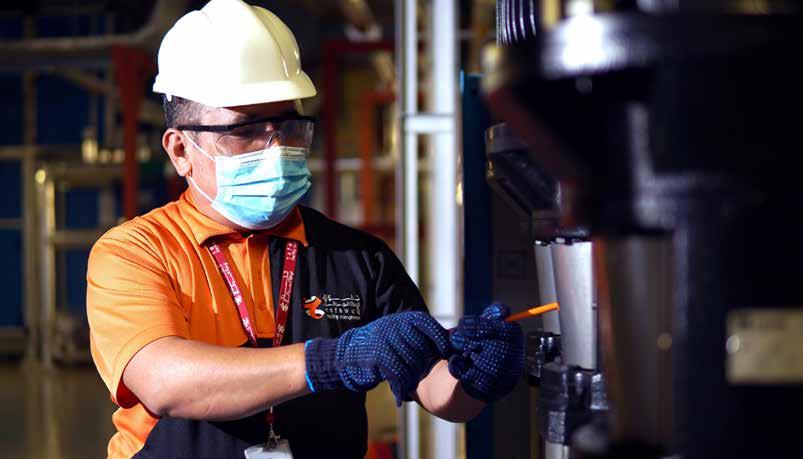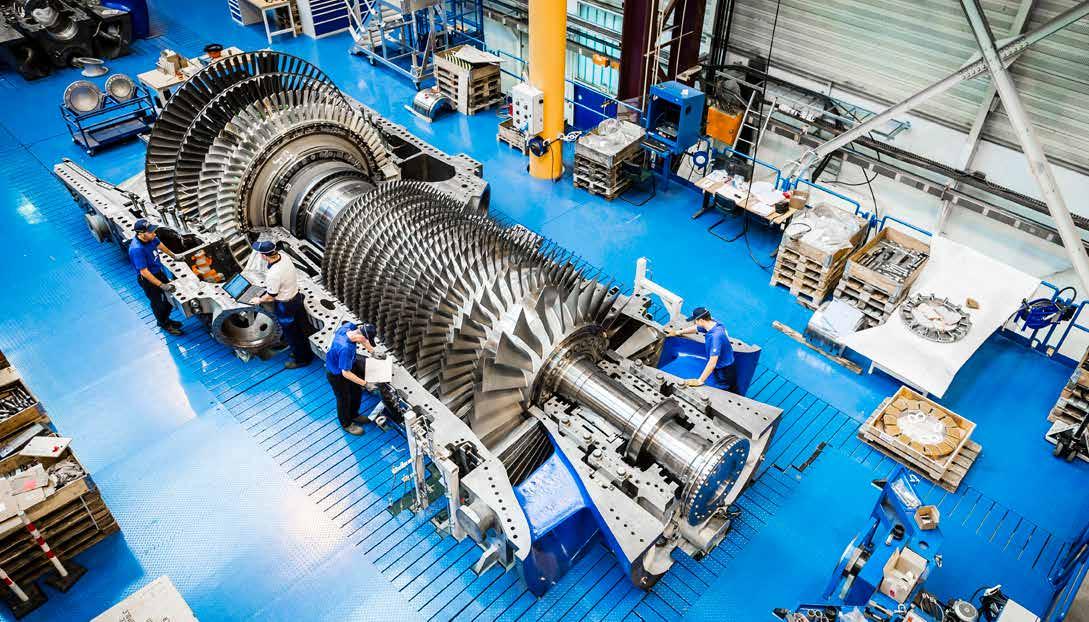
4 minute read
TECHNOLOGY
DRONE TECHNOLOGY
‘Growing number of construction firms in GCC use drones to get their operations back on track under the ‘new normal’: Rabih Bou Rashid, CEO of Falcon Eye Drones (FEDS)
An increasing number of construction firms and real estate developers in the GCC who are turning to drones’ technology as they get their operations back on track while safeguarding the health and safety of their workers.
This is according to Falcon Eye Drones (FEDS), the Middle East’s lead ing provider of Drone Technology, Data Technology, and Digital Trans formation. The company has recently closed a strategic investment with Aerodyne Group, creating the largest drone service company in the world.
Rabih Bou Rashid, CEO of FEDS said, “As the UAE and the wider region reopen their economic activities under the new normal, players in the construction industry would like to get their projects up to speed with as much as savings they can. Cashflow is crucial in today’s times, hence, more and more companies are turning to drones as they provide a cost-effective, safer and time-saving alternative to the conventional construction process.”
Bou Rashid noted that drones continue to prove their value in the sector, helping construction companies increase their reporting turnaround by 25 per cent and cut down site time wastage by 18.4 per cent as they con duct activities at a more accurate and stauncher pace than manual labor.
This, he added, is especially evi dent in the UAE—which is globally renowned as one of the leaders in construction.
“The UAE’s construction sector is now gearing up to continue projects as the country begins restoring its eco nomic operations. Companies are also exploring game-changing solutions to break ground in the ‘new normal’ while being mindful of workers’ health and safety,” he said.
“However, this is harder to achieve when you use the traditional con struction process. Having said that, we have noted a dramatic increase of enquiries and orders with regard

to the drone services that FEDS can offer to get them going again,” said Bou Rashid.
He said that using drones in the sector prevents costly mistakes as they allow managers to identify chal lenges in the pre-construction stage, spot mistakes, and measure progress during construction. Drones also improve safety in a sector that poses a high risk for fall, the number one cause of work-related fatalities for construction workers.
Bou Rashid highlighted the primary areas in which drones will be utilised by the construction sector during the new normal:
Rabih Bou Rashid, CEO of FEDS

PROGRESS MONITORING
Bou Rashid noted that progress moni toring through drones which can cut project value costs by up to 11.8 per cent and can decrease the time spent to compile the snag list (or inven tory of tasks by contractor) by 32 per cent—eliminating the unnecessary cost of regular manual supervision.
In addition, Bou Rashid said that since drones can conduct repeat flights to consistently monitor the construc tion progress and status, the possibility of doing manual rework decreases by 25 per cent. This helps site supervisors save five hours a week on unneces sary meetings, boosting productivity amongst workers as they can focus on other aspects of the project.
He also emphasised that the drones’ aerial view maps allow managers to sit down and easily de termine potential problems early on before they get costly.
Bou Rashid explained that the drones’ high-resolution and accurate data of the construction site overview help contractors spot errors on a regu lar basis—helping them act on it ahead of time and in turn, save the company from unnecessary expenses.
“Drones can help quickly identify potential problems in each phase, allowing managers to plan solutions ahead to prevent unnecessary back jobs that can dent a project’s schedule and budget. in addition, aside from the built-in data they have taken, drones can also overlay the blueprint of the construction to help contractors iden tify any deviations. Spotting a potential barrier to finish a project on time will save construction firms extra costs, time and effort,” said the FEDS CEO.
Aside from mitigating the risk of CO VID-19 infection thanks to less human contact, drones can help companies conduct a dangerous phase in progress monitoring—site inspections.
Drones keep construction work ers and personnel from the dangers of surveying complex and hazardous sites, such as towering roofs, colossal bridges, and skyscrapers.
Since drones can hover even around remote and risky spots to gather clips of the construction site, explained Bou Rashid, companies and contractors can now view the footages from the safety of their office.
“Drones offer a safe alternative to what is considered to be one of the most critical phases of construction. The task that usually takes days to complete can now be accomplished in a matter of minutes, depending on the requirement, and provide more precise inspection data,” the FEDS CEO underscored.
SITE MAPPING
The process of mapping wide con struction spaces used to be a long and rigorous process. However, Bou Rashid said that with drones, contrac tors can produce a speedier workflow with less effort needed.
Drones, he stressed, can finish the task accurately as well as send upto-date data straight into a computer for fast-track analysis. They can also map sites faster than land survey and produce data—even for large-scale projects—more precise than a satellite.
“It used to be that mapping a wide construction site involves hir ing a helicopter to fly over the areas just to capture images. Now, drones can get more accurate images in a shorter period and at more afford able costs,” he said.









